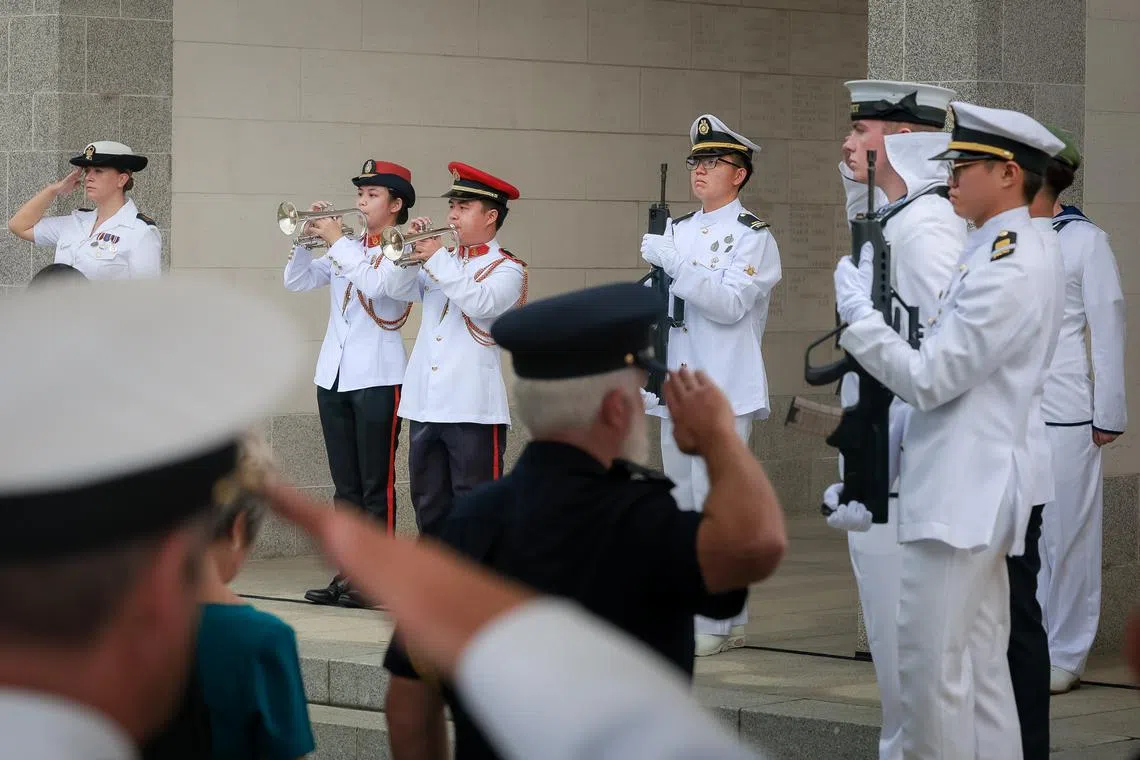PM Wong pays tribute to those who defended S’pore, marking 80th anniversary of end of World War II
Sign up now: Get ST's newsletters delivered to your inbox
Follow topic:
SINGAPORE – Prime Minister Lawrence Wong on Sept 12 paid tribute to those who defended Singapore, as well as the pioneers who rebuilt the country, on the 80th anniversary of the end of World War II here.
“As we mark 60 years of independence, we remember and honour all who defended Singapore, as well as the pioneers who endured the war and rebuilt our home from its ruins,” PM Wong wrote in a Facebook post.
“The peace and prosperity we enjoy today rests on their sacrifices. We can never fully repay this debt.
“But we can, and must, ensure that the price of war is never forgotten. Let us uphold the values of courage, resilience and determination they showed – and continue safeguarding Singapore and our way of life, together as one people.”
Eighty years ago, the Japanese Occupation of Singapore ended when Lord Louis Mountbatten, Supreme Allied Commander in South-east Asia, accepted Japan’s surrender at the former City Hall.
“For many of us in the post-war generations, memories of that time live on through the voices of our parents and grandparents,” wrote PM Wong.
“The Occupation was a dark chapter – marked by fear, suffering and the loss of innocent lives.”

The Last Post being played on the bugle during the Commemoration Ceremony for the 80th Anniversary of the End of World War II held at Kranji War Cemetery on Sept 12.
ST PHOTO: GAVIN FOO
He cited the Sook Ching massacre as one of the most tragic episodes of this period in Singapore’s history, adding that “these events remain deeply etched in our national memory”.
To mark the anniversary, a commemoration ceremony was held at the Kranji War Memorial on Sept 12 to honour those who fought to defend Malaya and Singapore, as well as civilians who died during the war.
During the ceremony, a remembrance bell – first rung during the 70th anniversary of the Fall of Singapore in 2012 – was rung five times to mark the years of the war.
Local organisations, veterans and foreign dignitaries also laid wreaths at the event. This was followed by the laying of Senbazuru, or 1,000 paper cranes, by the Japanese community.


